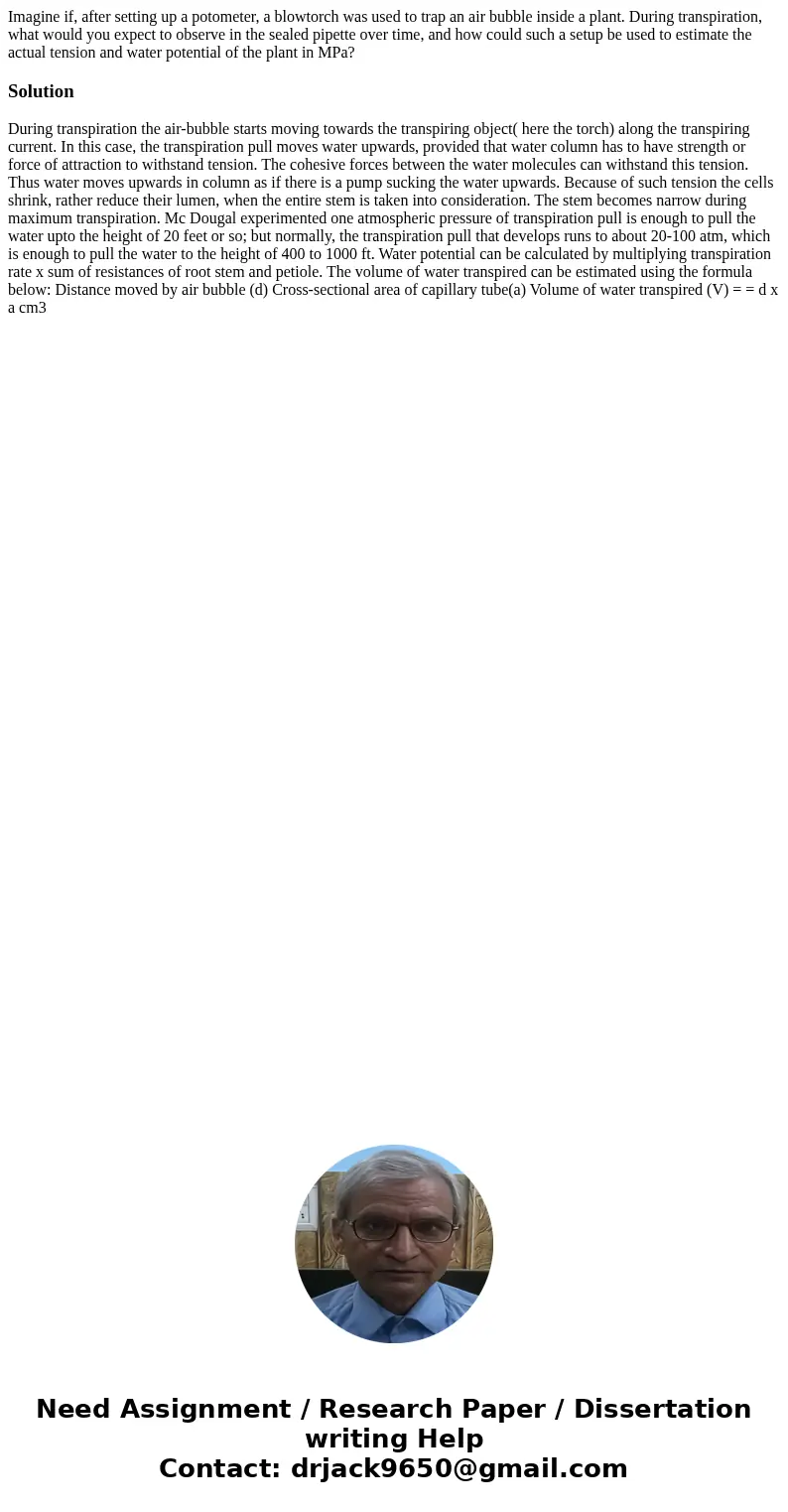Imagine if after setting up a potometer a blowtorch was used
Imagine if, after setting up a potometer, a blowtorch was used to trap an air bubble inside a plant. During transpiration, what would you expect to observe in the sealed pipette over time, and how could such a setup be used to estimate the actual tension and water potential of the plant in MPa?
Solution
During transpiration the air-bubble starts moving towards the transpiring object( here the torch) along the transpiring current. In this case, the transpiration pull moves water upwards, provided that water column has to have strength or force of attraction to withstand tension. The cohesive forces between the water molecules can withstand this tension. Thus water moves upwards in column as if there is a pump sucking the water upwards. Because of such tension the cells shrink, rather reduce their lumen, when the entire stem is taken into consideration. The stem becomes narrow during maximum transpiration. Mc Dougal experimented one atmospheric pressure of transpiration pull is enough to pull the water upto the height of 20 feet or so; but normally, the transpiration pull that develops runs to about 20-100 atm, which is enough to pull the water to the height of 400 to 1000 ft. Water potential can be calculated by multiplying transpiration rate x sum of resistances of root stem and petiole. The volume of water transpired can be estimated using the formula below: Distance moved by air bubble (d) Cross-sectional area of capillary tube(a) Volume of water transpired (V) = = d x a cm3
 Homework Sourse
Homework Sourse